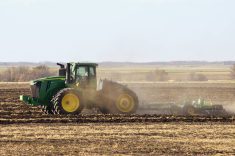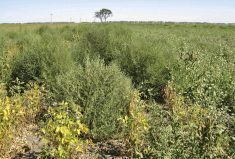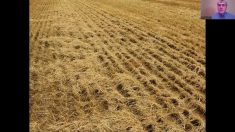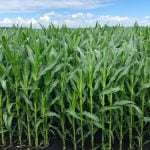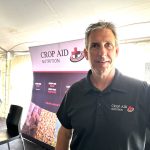A uniform grain crop is easier to talk about than achieve.
If the farmer is waiting until spring to worry about it though, they’re months behind, according to one U.S.-based crop consultant
Phil Needham, owner of Needham Ag Technologies in Kentucky, argues that uniformity starts with effective fall residue management.
Read Also
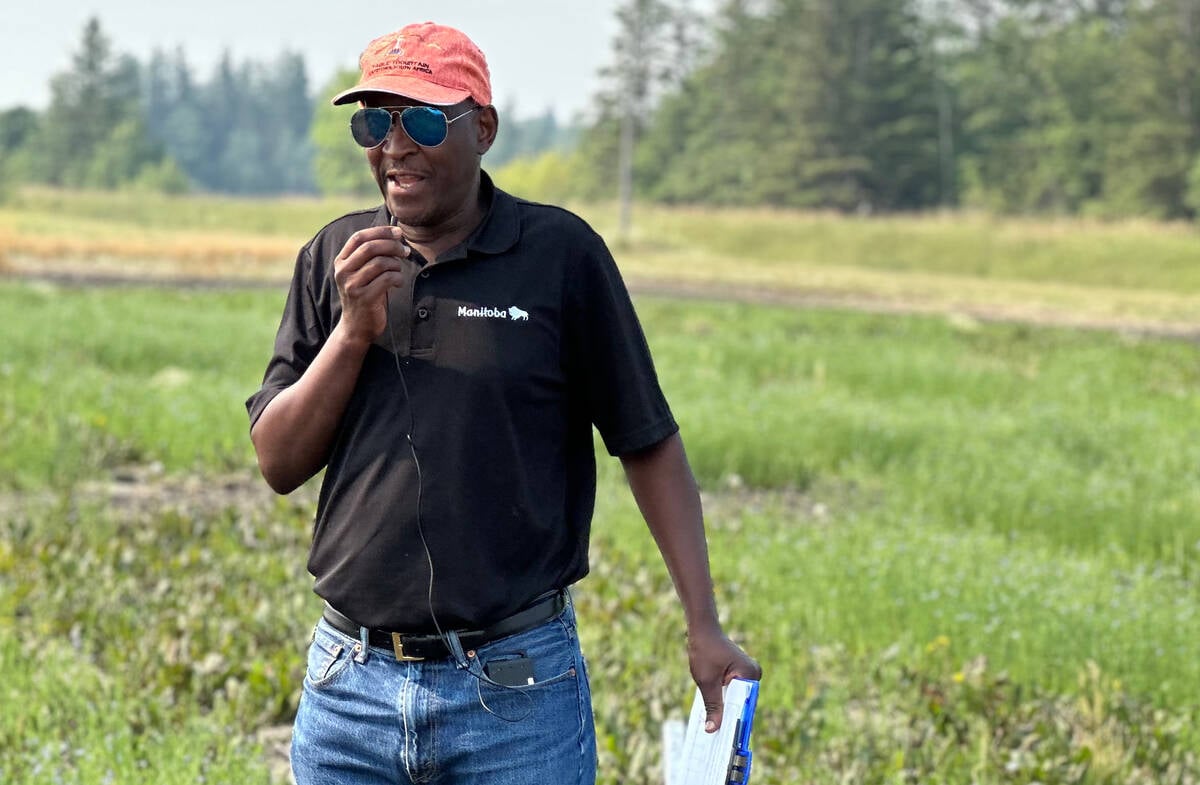
How much nitrogen can farmers really cut?
Manitoba fertilizer trials look for nitrification inhibitor sweet spot, to lower greenhouse gas emissions and cost without hurting yield.
“I often drive from Regina to Saskatoon in the spring at seeding time or shortly after seeding time,” he told attendees of Saskatchewan’s late-2024 Agronomy Research Update in Saskatoon
“In a year when they had good crops and good moisture, a lot of seeders really struggled from the point of view of getting through some of the heavier residue, especially if they plant in wheat after a cereal, or canola after wheat.”
Why it matters: A uniform grain crop helps optimize yield, improve grain quality and brings agronomic advantages.
Part of the solution therefore starts with the combine. Needham suggested producers might want to consider new choppers and spreaders, designed to more evenly distribute residue out of the back of the machine.
Proper equipment maintenance will also determine how well residue is managed, he said.
“Make sure the stationary knives and the rotary knives are replaced on a regular basis. Make sure you adjust them as well as possible for the conditions.”
Bigger headers, less uniformity
Uneven residue management gets worse the bigger combine headers get, said Needham.
“I’m not in favour of these wider heads,” he said. “I’d rather you run faster with a 40- or a 45-foot head and do a better job spreading residue than create residue while driving slow with a 60 (foot header).
“You’ve obviously got to spread the residue evenly at harvest time, (but) even some of the newest combines, they’re struggling to spread residue much wider than 35, maybe 40 feet if you’re lucky. But growers are putting 50-foot heads on the front of these combines … so they’ve got residue streaks across the field.”
He further pointed to even bigger headers, pushing up to 60 feet, in places like Australia, the U.S. and starting to make inroads in Western Canada.

In a 2023 Q&A with Grainews, Alberta crop advisor and manager of agronomic solutions with Nutrien Ag Solutions, Jordan Peterson, noted that dry crops are chopped finer and tend to spread farther across the harvested area. He urged growers to double check the status of their straw choppers and spreaders and to make sure that equipment is in good condition with sharp knives and strong blowers.
“Using stripper headers to remove the grain and leave straw standing can be another option to conserve moisture over the winter and prevent crop residue from building up on the soil surface,” he noted.
Easier to manage disease in uniform crop
Needham stressed that crop uniformity can make applications of fusarium-suppressing products much easier and uniform. If the crop isn’t uniform and the grower is waiting for parts of the crop to head out, they may miss the window for applying a product like Prosaro Pro.
“What we’re trying to do is get uniform stands early, uniform emergence out of the ground so the crop heads out evenly,” he said.
“You’ve got to be able to apply your fungicide as the heads are heading out, ideally before the anthers begin dropping out of the spikelets.”
Mid-row banding rather than side row
When seeding, Needham prefers mid-row banding to side-banding, particularly in heavy-residue environments.
“(When) growers are having to moisture-seek by planting two inches or perhaps deeper, some of the side band openers disrupt a lot of soil. “
That can drive a lack of uniformity, he said.
“So the first opener point opens up the soil. The next one follows behind it (and) just explodes that side wall. So you get a lot of soil disturbance and, oftentimes the fertilizer doesn’t get good, consistent placement relative to the seeds. And sometimes you can get fertilizer injury.”
Farmers should choose a seeding system that works for them in their area, he added.
To harrow or not to harrow?
If there’s one practice Needham would like to see eliminated most of the time, it’s harrowing.
“I really, really think there’s a lot of fields that are harrowed and there’s absolutely no benefit at all from the harrowing,” he said.
“I think some of these harrows are actually hurting yields rather than helping yields because they’re not spreading residue. They’re losing moisture, and in a dry year that can be a yield-reducing effect.”
Needham argues that the cost farmers sink into harrows and harrowing would often be better spent on better residue management systems at the back of the combine.
Others in the industry are more open to the harrows. In the same 2023 Q&A, for example, Peterson, counted harrowing as a way to help even out that patchy residue that the combine or chopper may have left.
It helps evenly distribute residue and, as long as the straw is dry, helps break up clumps and mounds.
“This field operation helps to increase contact with soil for microbial activity to begin,” he wrote at the time.
“A last resort in this context would be the removal of residue through baling or burning,” he said, but he also cautioned that those practices will have a cost.
“Both strategies will remove a large amount of usable plant nutrients and potential organic matter from the field ecosystems that is not easily replaced in a timely or effective manner.” —With files from Grainews staff







